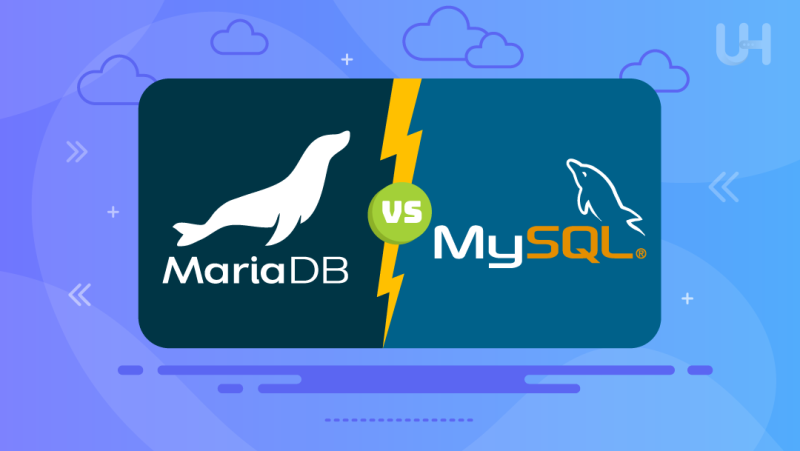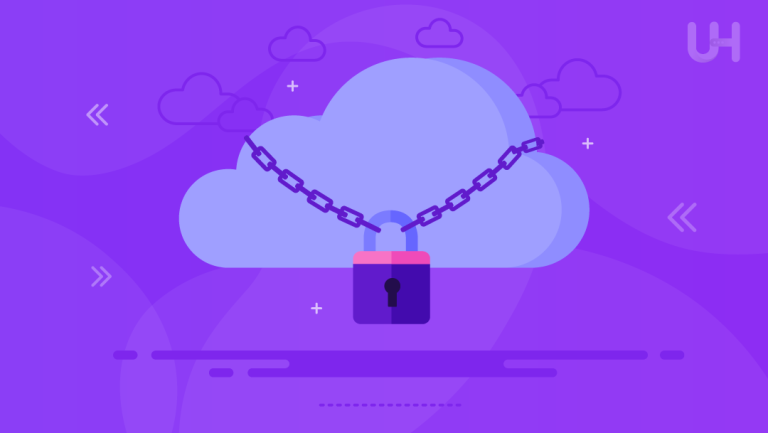MariaDB and MySQL are two prominent relational database management systems (RDBMS) widely used across various industries. While they share a common ancestry, with MariaDB being a fork of MySQL, they have evolved independently, each offering unique features and optimizations.
Choosing the right database management system is critical for businesses and developers as it forms the backbone of data storage and retrieval in software applications. Factors such as performance, scalability, features, compatibility, and support play crucial roles in this decision-making process.
In this blog, we will discuss the comparison of MariaDB and MySQL in 2024, aiming to provide insights into their technical architecture, performance, features, compatibility, community support, security, cost considerations, and future outlook.
History and Background
MySQL traces its origins back to 1994 when it was initially developed by a Swedish company called MySQL AB. The creators, Michael Widenius, David Axmark, and Allan Larsson, aimed to develop a relational database management system that was lightweight, fast, and easy to use. MySQL quickly gained popularity among developers due to its open-source nature, robust performance, and compatibility with various operating systems.
Over the years, MySQL became one of the most widely used databases in the world, powering a vast array of applications ranging from small websites to large-scale enterprise systems. Its acquisition by Sun Microsystems in 2008 further solidified its position in the database market.
Development of MariaDB as a Fork of MySQL
In 2009, concerns arose within the MySQL community following Oracle Corporation’s acquisition of Sun Microsystems. Some developers feared that Oracle’s control over MySQL could lead to changes that might not align with the principles of open source. As a result, Michael “Monty” Widenius, one of the original creators of MySQL, decided to fork MySQL to create MariaDB.
MariaDB retained compatibility with MySQL’s APIs and data formats while also introducing new features, optimizations, and enhancements. The goal was to provide a drop-in replacement for MySQL, offering users an alternative that remained true to the principles of open source and community-driven development.
MariaDB vs MySQL: Technical Comparison
Architecture
MariaDB and MySQL share a fundamental client-server architecture, where clients communicate with the database server via SQL queries. They both consist of components such as the SQL layer, query parser, optimizer, and storage engine interface. These databases support multi-threaded and multi-process architectures, enabling them to efficiently handle concurrent connections and queries. However, one notable difference lies in their storage engines. While both offer a variety of engines like InnoDB and MyISAM, MariaDB tends to introduce more performance enhancements and optimizations in its releases. Additionally, both database management systems employ similar replication methods. It includes asynchronous and semi-synchronous replication, with MariaDB often implementing additional improvements in this area.
Performance
Benchmarking tests across various workloads generally show comparable performance between MariaDB and MySQL in terms of throughput and latency. However, the actual performance can be influenced by factors such as workload characteristics, hardware configurations, and optimization settings. Both databases are designed to scale efficiently, horizontally and vertically, to handle large datasets and high transaction volumes. They provide features such as sharding, partitioning, and clustering for distributing data and workload across multiple nodes, enhancing scalability and fault tolerance.
Features
In terms of features, MariaDB and MySQL offer similar core functionalities such as transactions, ACID compliance, stored procedures, and triggers. However, MariaDB often introduces new features and enhancements ahead of MySQL releases. These may include support for JSON data types, temporal data types, and advanced security features. Since 2022, both databases have likely continued to evolve. MariaDB focuses on performance, scalability, security, and compatibility enhancements. MySQL may have introduced improvements in areas like query optimization, replication, and support for new storage engines.
Compatibility and Ecosystem
Both MariaDB and MySQL prioritize maintaining compatibility with existing applications and libraries built for MySQL. Migration between the two databases is typically straightforward due to their shared heritage and adherence to SQL standards. The ecosystems surrounding MariaDB and MySQL are robust, offering a wide array of third-party tools, plugins, and community resources. While there may be slight differences in the availability of certain tools or plugins, developers and administrators can find comprehensive support for development, administration, and monitoring tasks within both ecosystems.
Applications Using MariaDB or MySQL in 2024
In 2024, MariaDB and MySQL continue to serve a diverse range of industries and applications, owing to their flexibility, scalability, and reliability. These databases are widely adopted in sectors such as online stores with eCommerce hosting, finance, healthcare, telecommunications, and more. In the e-commerce industry, for example, MariaDB and MySQL power the backend infrastructure of online retail platforms. Also, handling product catalogs, customer data, and transaction processing. In finance, they are utilized for banking systems, trading platforms, and financial analytics. Across various other sectors, these databases are integral to content management systems, CRM software, business intelligence (BI) tools, and IoT (Internet of Things) applications.
Community and Support
The communities surrounding MariaDB and MySQL are bustling hubs of activity, driven by passionate developers, enthusiasts, and organizations. These communities are crucial pillars supporting the ongoing development, enhancement, and maintenance of both databases.
Community involvement manifests in various forms, starting from individual developers submitting code patches and bug fixes to large organizations contributing substantial resources to the projects. This collaborative effort ensures that MariaDB and MySQL remain robust, reliable, and responsive to the evolving needs of users across different industries and use cases.
In addition to code contributions, community members actively participate in other aspects such as bug reporting, feature requests, documentation updates, and knowledge sharing. Community-driven initiatives like hackathons, meetups, and conferences provide platforms for users to connect. Moreover, exchange ideas and learn from each other’s experiences.
The open-source ethos embraced by MariaDB and MySQL fosters a culture of transparency, inclusivity, and collaboration. Community members are welcome and encouraged to contribute regardless of skill level or background. Therefore, making the communities vibrant and diverse ecosystems of shared knowledge and expertise.
Support Options Available for Both Systems
Both MariaDB and MySQL maintain active community forums where users can seek help, share experiences, and engage with the community. These forums serve as invaluable resources for troubleshooting issues, discussing best practices, and staying updated on developments.
Additionally, comprehensive documentation is available for both databases, covering installation guides, configuration options, SQL syntax, and more. The documentation is regularly updated to reflect new features, changes, and improvements.
Commercial Support Offerings:
For users requiring professional assistance, both MariaDB and MySQL offer commercial support options provided by their respective companies. Commercial support offerings typically include services such as technical support, troubleshooting, performance tuning, and security advisories. These services are tailored to meet the specific needs of businesses with enterprise hosting and organizations running mission-critical applications.
Commercial support subscriptions often come with additional benefits. Such as access to certified binaries, software updates, training resources, and proactive monitoring services.
Whether users opt for community-driven support or commercial support offerings, they can expect a high level of expertise, responsiveness, and commitment from the MariaDB and MySQL support teams. These support options ensure that users receive timely assistance and guidance to resolve issues. Moreover, optimize performance, and maximize the value of their database deployments.
Enhance Your Database Management System!
Need superior Database management? UltraHost offers MySQL hosting to deliver top-tier performance for high-traffic sites and real-time applications. Scale effortlessly with UltraHost and transform your data management today.
Security and Compliance
Security is paramount in database management systems, and both MariaDB and MySQL offer robust features to ensure the confidentiality, integrity, and availability of data.
Both MariaDB and MySQL support various authentication mechanisms, including standard username/password authentication and integration with external authentication services like LDAP (Lightweight Directory Access Protocol) and PAM (Pluggable Authentication Modules). These authentication methods help ensure that only authorized users can access the database.
Additionally, both databases offer fine-grained access controls, allowing administrators to define permissions at the database, table, and even column levels. This granularity enables administrators to implement the principle of least privilege, limiting users’ access to only the data they need.
Encryption
MariaDB and MySQL provide encryption features to protect data both at rest and in transit. They support SSL/TLS encryption for secure connections between clients and servers, preventing eavesdropping and data interception. Furthermore, they offer encryption options for data security, ensuring that data remains encrypted even when at rest on disk.
Auditing and Logging
Both databases offer auditing and logging capabilities to track and monitor database activities. Administrators can configure audit logs to record critical events such as logins, queries, schema changes, and administrative actions. These audit logs serve as valuable forensic tools for investigating security incidents and ensuring compliance with regulatory requirements.
MariaDB and MySQL support additional security plugins and extensions to enhance security capabilities further. These plugins provide features such as advanced authentication methods (e.g., two-factor authentication), data masking, web application firewalls, and more. Administrators can leverage these plugins to augment the databases’ built-in security controls and tailor security measures to their specific needs.
In terms of security best practices, both MariaDB and MySQL recommend regular software updates to patch known vulnerabilities, implementing strong password policies, restricting access based on the principle of least privilege, and conducting regular security audits to identify and address potential security gaps.
Compliance with Industry Standards such as GDPR, HIPAA, and PCI DSS
Both MariaDB and MySQL are designed to help organizations achieve compliance with various industry regulations and standards, including:
GDPR (General Data Protection Regulation)
MariaDB and MySQL provide features such as encryption, access controls, and auditing capabilities to assist organizations in complying with GDPR requirements related to data protection, privacy, and consent management. These features help ensure that personal data is processed securely and in accordance with GDPR principles.
HIPAA (Health Insurance Portability and Accountability Act)
MariaDB and MySQL offer features and security controls necessary for healthcare organizations to meet HIPAA requirements for safeguarding protected health information (PHI). These include encryption, access controls, and audit logging, which help ensure the confidentiality and integrity of PHI stored in the databases.
PCI DSS (Payment Card Industry Data Security Standard)
Organizations handling payment card data can leverage MariaDB and MySQL’s security features to comply with PCI DSS requirements for protecting cardholder data. Encryption, access controls, and logging of access to sensitive data are essential components of PCI DSS compliance, and both databases offer these features to help organizations meet regulatory obligations.
By implementing these security features and adhering to best practices, organizations can strengthen the security posture of their database deployments, mitigate the risk of data breaches, and demonstrate compliance with relevant regulatory requirements. This not only protects sensitive data but also helps build trust with customers and stakeholders.
MariaDB vs MySQL: Cost Considerations

Both MariaDB and MySQL are open-source database management systems, which means that they are available for free under the terms of the GNU General Public License (GPL). This allows users to download, install, and use the software without any upfront licensing fees.
However, while the core software is free, there may be additional costs associated with certain features, services, or support options. For example, MariaDB Corporation and Oracle Corporation, the companies behind MariaDB and MySQL, respectively, offer commercial licenses for organizations that require additional support, features, or indemnification. These commercial licenses typically come with a subscription fee based on different factors. Such as the number of servers, the level of support required, and the specific features included.
Additionally, organizations may incur costs related to third-party tools, plugins, or integrations that complement MySQL or MariaDB deployments. These costs can vary depending on the specific tools or services selected and the vendor’s pricing model.
MySQL vs MariaDB: Total Cost of Ownership (TCO)
When considering the total cost of ownership (TCO) of MariaDB or MySQL, organizations should take into account various factors beyond licensing fees, including deployment, maintenance, and support costs.
Deployment Costs: Deployment costs include expenses related to hardware, infrastructure, and personnel required to set up and configure the database environment. While the software itself is free, organizations may need to invest in servers, storage, and networking equipment. Moreover, there are other resources as well to support their MariaDB or MySQL deployments.
Maintenance Costs: Maintenance costs encompass ongoing expenses associated with managing and maintaining the database environment. This includes tasks such as monitoring, backup and recovery, performance tuning, and software updates. While open-source databases like MariaDB and MySQL benefit from community-driven support and updates. Organizations may still incur costs related to internal staff or third-party services to handle maintenance tasks effectively.
Support Costs: Support costs include expenditures associated with obtaining technical support, troubleshooting assistance, and access to software updates and patches. While community-driven support options are available for free, organizations may opt for commercial support subscriptions provided by MariaDB Corporation or Oracle Corporation to ensure timely assistance and expert guidance when needed. These support subscriptions typically come with service level agreements (SLAs) and may be priced based on factors such as the level of support required and the size of the deployment.
By considering all these factors, organizations can make informed decisions about the total cost of ownership of MariaDB or MySQL and evaluate the most cost-effective options based on their specific requirements, budget constraints, and long-term strategic objectives.
MariaDB vs MySQL: Migration and Upgradability
Migrating between MariaDB and MySQL, or vice versa, requires careful planning and consideration of several factors to ensure a smooth transition and minimize potential disruptions. Some key considerations for migration include:
- Compatibility and Feature Parity: While MariaDB and MySQL share a common heritage and aim for compatibility, there may be differences in features, syntax, and behavior between the two databases. It’s essential to assess the compatibility of existing applications, queries, and stored procedures with the target database. Also, identify any potential areas of concern.
- Data Migration: Data migration involves transferring existing databases, tables, and data from the source database to the target database. This process requires thorough testing and validation to ensure data integrity and consistency across the migration. Tools and utilities such as mysqldump, MySQL Workbench, and MariaDB’s mysqlpump can facilitate the migration process by exporting and importing database objects and data.
- Application Compatibility: Applications relying on MySQL-specific features or APIs (Application Programming Interface) may require modifications or updates to ensure compatibility with MariaDB or vice versa. It’s crucial to review application code, libraries, and dependencies to identify any MySQL-specific constructs that need to be adapted for MariaDB or vice versa.
- Performance and Optimization: Migration presents an opportunity to optimize database configurations, indexing strategies, and query performance. It’s advisable to conduct performance testing and benchmarking before and after migration. It is to identify potential performance improvements and fine-tune database settings accordingly.
- Testing and Validation: Rigorous testing and validation are essential steps in the migration process to identify and address any issues or inconsistencies before deploying the new database environment into production. This includes testing application functionality, data integrity, performance benchmarks, and failover scenarios to ensure a seamless transition.
Tools and Resources Available for Database Migration
Several tools and resources are available to assist organizations in database migration and upgrade processes between MariaDB and MySQL:
- MySQL Workbench: MySQL Workbench is a comprehensive graphical tool provided by Oracle Corporation for database development, administration, and migration. It includes features for schema design, SQL development, data modeling, and database migration, making it a valuable tool for managing database environments.
- MariaDB’s mysqlpump: MariaDB’s mysqlpump utility is a modern replacement for mysqldump. It offers parallel backup and restore capabilities, improved performance, and better support for large databases. It can be used to export data from MySQL and import it into MariaDB or vice versa.
- Third-Party Migration Tools: Various third-party migration tools and services are available to streamline database migration processes. These tools offer features such as schema conversion, data synchronization, and automated migration workflows. It reduces the complexity and manual effort involved in migration.
- Documentation and Community Resources: Both MariaDB and MySQL provide extensive documentation, guides, tutorials, and community forums to support users throughout the migration and upgrade processes. These resources offer valuable insights, best practices, and troubleshooting tips to help organizations navigate the challenges of database migration effectively.
By leveraging these tools and resources and following best practices for migration and upgrade processes, organizations can minimize risks, optimize performance, and ensure a successful transition between MariaDB and MySQL or vice versa.
MariaDB vs MySQL: Future Outlook
The future development and adoption of MariaDB and MySQL are likely to be influenced by several key trends and factors:
- Continued Innovation: Both MariaDB and MySQL are expected to continue evolving with regular releases introducing new features, performance enhancements, and optimizations. This includes advancements in areas such as scalability, security, compatibility with emerging technologies, and support for cloud-native architectures.
- Cloud Adoption: The increasing adoption of cloud computing is likely to drive demand for cloud-native database solutions. Both MariaDB and MySQL are expected to strengthen their cloud offerings and integrations with leading cloud platforms. Moreover, they provide users with greater flexibility, scalability, and ease of management in the cloud environment.
- Focus on Performance and Scalability: As data volumes continue to grow exponentially, there will be a greater emphasis on performance and scalability. MariaDB and MySQL are expected to invest in technologies such as distributed databases, in-memory processing, and parallel query execution. It is to meet the demands of high-performance and data-intensive workloads.
- Data Privacy and Security: With growing concerns around data privacy and data security, MariaDB and MySQL are likely to enhance their security features. Also, compliance capabilities to address evolving regulatory requirements and security threats. This includes improvements in areas such as encryption, access controls, audit logging, and data protection mechanisms.
- Community Engagement: Community involvement and contributions are expected to remain integral to the development and success of MariaDB and MySQL. Both databases will continue to foster vibrant and active communities. By encouraging collaboration, innovation, and knowledge sharing among users, developers, and organizations worldwide.
MariaDB vs MySQL: Potential Challenges and Opportunities
While MariaDB and MySQL are well-established database systems with large user bases, they face several challenges and opportunities in the evolving landscape of database technology:
- Competition from New Technologies: MariaDB and MySQL face competition from newer database technologies such as NoSQL databases, NewSQL databases, and cloud-native databases. They will need to innovate and adapt to compete effectively in a rapidly changing market landscape.
- Migration to the Cloud: The migration of workloads to the cloud presents both challenges and opportunities for MariaDB and MySQL. While cloud adoption offers scalability, flexibility, and cost savings, it also requires adapting to new deployment models, architectures, and management practices.
- Data Governance and Compliance: Ensuring compliance with regulatory requirements such as GDPR, HIPAA, and PCI DSS remains a challenge for organizations using MariaDB and MySQL. Both databases need to provide robust features and tools for data governance, privacy, and compliance to address these challenges effectively.
- Integration with Emerging Technologies: MariaDB and MySQL need to integrate seamlessly with emerging technologies such as AI (Artificial Intelligence), IoT (Internet of Things), and blockchain. This requires enhancing compatibility, performance, and interoperability with these technologies to support modern application development requirements.
- Sustainability and Community Engagement: Maintaining the sustainability of open-source projects and fostering community engagement are ongoing challenges for MariaDB and MySQL. Both databases need to ensure the long-term viability of their projects by attracting new contributors. Furthermore, by retaining existing community members and providing resources and support for community-driven initiatives.
Overall, MariaDB and MySQL are poised to continue playing a significant role in the database ecosystem. Moreover, it is driven by ongoing innovation, community engagement, and adaptation to emerging trends and challenges in database technology.
Conclusion
In conclusion, the comparison between MariaDB vs MySQL in 2024 underscores the dynamic nature of database technology and the ever-evolving needs of organizations. Both MariaDB and MySQL have established themselves as powerful and reliable database management systems.
While MariaDB and MySQL share a common heritage, they have distinct features such as support options and ecosystems that cater to diverse requirements and preferences. Whether it’s the robustness of MySQL or the innovations introduced by MariaDB, organizations have options to choose the database that best aligns with their needs, priorities, and future aspirations.
Ready to take your database infrastructure to the next level? Explore our PHP hosting options at Ultahost and unlock the full potential of your web applications!
FAQ
What’s the main difference between MariaDB vs MySQL?
MariaDB is a fork of MySQL, offering additional features and optimizations. While both prioritize compatibility, MariaDB often introduces innovations ahead of MySQL.
Which is more secure, MariaDB or MySQL?
Both prioritize security with features like authentication, encryption, and access controls. The choice depends on specific needs and the implementation of security measures.
Are there any performance differences between MariaDB vs MySQL?
Both offer comparable performance, subject to factors like workload and configuration.
Which database is more cost-effective, MariaDB or MySQL?
Both are free under GPL, but additional features or support may incur costs.
Is it easy to migrate from MySQL to MariaDB or vice versa?
Migration requires planning for compatibility, data transfer, and application adjustments, though tools are available to assist.










